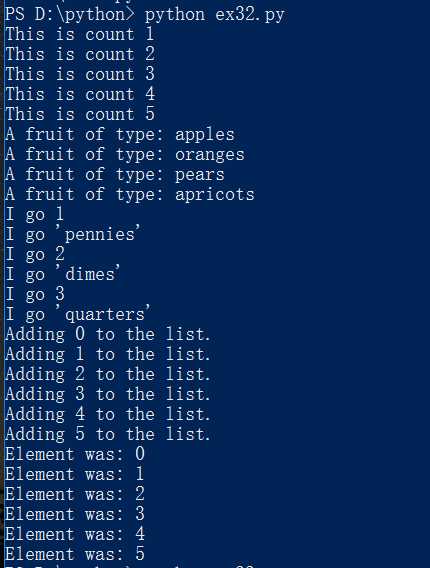标签:class 序列 cti style 技术 code com one for
1 the_count = [1, 2, 3, 4, 5] 2 fruits = [‘apples‘, ‘oranges‘, ‘pears‘, ‘apricots‘] 3 change = [1, ‘pennies‘, 2, ‘dimes‘, 3, ‘quarters‘] 4 5 # this first kind of for-loop goes through a list 6 for number in the_count: 7 print "This is count %d" % number 8 9 # sanme as above 10 for fruit in fruits: 11 print "A fruit of type: %s" % fruit 12 13 # also we can go through mixed lists too 14 # notic we have to use %r since we don‘t know what‘s in it 15 for i in change: 16 print "I go %r" % i 17 18 # we can also build lists, first start with an empty one 19 elements = [] 20 21 # then use the range function to do 0 to 5 counts 22 for i in range(0 ,6): 23 print "Adding %d to the list." % i 24 # append is a function that lists understand 25 elements.append(i) 26 27 # now we can print them out too 28 for i in elements: 29 print "Element was: %d" % i 30

for:用来循环和打印各种各样的列表
elements.append():append向后面添加元素,参数可以是任何东西,将作为元素添加到列表尾部。
rang():如果你需要一个数值序列,使用内建函数range() 会很方便,它产生等差级数序列。
标签:class 序列 cti style 技术 code com one for
原文地址:http://www.cnblogs.com/LevenLau/p/6380131.html